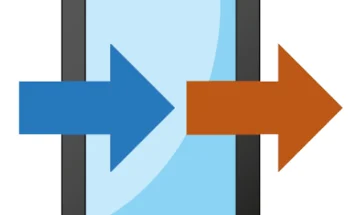Mastering Editing Overlays:
In the world of digital media, editing overlays have become an essential tool for enhancing visuals and creating impactful content. Whether you’re working on a YouTube video, a social media post, or a marketing campaign, overlays can add an extra layer of creativity, professionalism, and engagement to your work. In this article, we’ll explore the concept of editing overlays, how they work, different types of overlays, and tips for using them effectively in your content creation.
What Are Editing Overlays?
At their core, editing overlays are graphic elements that are layered on top of a video or image. These elements can range from simple text and logos to more complex visual effects, such as filters, animations, or interactive components. Overlays are applied during the post-production process to enhance the overall look and feel of the content, highlight specific details, or add visual interest.Overlays are used in a variety of industries, including film, television, advertising, social media, gaming, and more. They help draw attention to important parts of a scene or communicate information in a visually appealing way. Common examples include social media handles, lower thirds, countdowns, captions, watermarks, and even graphic animations.
Types of Overlays in Video and Image Editing
There are several types of overlays, each serving a unique purpose. Understanding the different types will allow you to choose the most appropriate overlay for your project. Let’s take a closer look at some common overlay types.
1.Text Overlays
One of the simplest and most common types of overlays is text. Text overlays are used to convey messages, titles, subtitles, and additional information to viewers. For example, in news broadcasts, lower thirds (the graphics that appear at the bottom of the screen) often display the name and title of a person on screen. In YouTube videos, text overlays can be used to display key points, add emphasis, or create a call to action.
Key Uses:
– Adding captions or subtitles
– Displaying titles or credits
– Branding and call-to-action messages
– Highlighting important points in a video
2.Logo and Branding Overlays
For content creators and businesses, including a logo overlay is crucial for establishing brand identity. A logo overlay typically appears as a transparent or semi-transparent image placed on top of the content. These overlays are often used in live streams, social media posts, and promotional videos to ensure that the brand is always visible to the audience.
Key Uses:
– Maintaining brand visibility
– Promoting products or services
– Strengthening brand recognition
– Watermarking content
3.Image and Video Overlays
In some cases, you may want to overlay entire images or video clips onto your primary video or image. These can be static graphics (like a still image) or dynamic animations (such as GIFs or video clips). This type of overlay is often used for visual effects, such as adding a background scene, motion graphics, or decorative elements that enhance the overall aesthetics of the content.
Key Uses:
– Enhancing the visual appeal of a video
– Adding background elements or scene transitions
– Creating a layered effect
– Inserting animated graphics, such as lower thirds or frame borders
4.Filter Overlays
A filter overlay is an effect applied to change the color scheme, mood, or tone of the video or image. Filters are frequently used to enhance the visual quality, create a specific atmosphere, or give the content a professional or cinematic look. Filters can range from subtle adjustments to dramatic color changes, like a sepia tone, black and white, or vintage film look.
Key Uses:
– Adjusting color grading and tone
– Creating a mood or theme for the content
– Giving the content a polished, professional appearance
– Mimicking specific visual styles (e.g., old film, VHS, etc.)
5.Interactive Overlays
As digital media evolves, interactive overlays have become increasingly popular, particularly in live streams and gaming content. These overlays allow viewers to interact with the content, often through buttons, polls, or pop-up information. They can be used in platforms such as Twitch, YouTube Live, and interactive ads. Interactive overlays make the viewer experience more engaging and personal.
Key Uses:
– Adding interactive elements to live streams (polls, reactions, etc.)
– Enhancing gaming experiences with live feedback or statistics
– Encouraging viewer participation in a video or livestream
– Displaying real-time comments or chat messages
How to Use Overlays Effectively in Editing
Now that we’ve covered the types of overlays, let’s talk about how to use them effectively in your editing process. Whether you’re a beginner or an experienced editor, these tips will help you create professional-looking content that stands out.
1.Plan Your Overlay Usage Ahead of Time
Before diving into the editing process, it’s important to plan where and when overlays will be used in your project. Overlays should never feel like an afterthought, so consider the purpose of your content and how overlays can enhance it. For example, if you’re creating a tutorial video, text overlays could be used to highlight important steps. If you’re producing an action-packed gaming video, motion graphics could add excitement and flair.Make a list of the types of overlays you’lneed (text, logo, filters, etc.) and their placements. This planning will streamline your editing process and ensure that you don’t overcrowd the screen with unnecessary elements.
2. Avoid Overcrowding the Screen
While overlays can add flair to your content, it’s crucial not to overdo it. Too many overlays can overwhelm your audience and detract from the main message or visual. Use overlays strategically and sparingly to highlight key points without distracting from the primary visuals.When adding text, consider the font size and placement. Make sure it’s legible and doesn’t obscure important parts of the scene. The same goes for logos and branding—ensure that they’re visible but not obtrusive.
3.Choose Complementary Styles
Consistency is key when selecting overlays for your content. Choose graphic elements that complement the overall aesthetic of your project. If your video has a modern, minimalist feel, avoid using flashy, over-the-top overlays. If the content is more playful or creative, feel free to experiment with bolder designs.For example, if you’re editing a corporate video, use clean, professional text and subtle logo overlays. For a gaming video, you might want to incorporate dynamic, animated overlays that reflect the high-energy nature of the content.
4. Use Motion Effects for Dynamic Overlays
Static overlays can be effective, but motion overlays often create more engagement and excitement. Incorporating animations and transitions can make your content feel more dynamic and polished. For example, animated lower thirds or text pop-ups can add energy to a video, while transitions between scenes can help guide the viewer’s attention from one element to another.
Be mindful of the pacing of your content. Fast-moving overlays may work well in action scenes, but for slower-paced videos, more subtle animations are better suited.
5.Match Your Overlays to the Platform
Different platforms have different requirements for overlays. For instance, YouTube videos often benefit from large text overlays for easy reading, while Instagram stories might favor smaller, more stylish text with interactive elements. Be sure to tailor your overlay designs to the platform on which your content will be shared.
For live streaming platforms like Twitch or YouTube Live, overlays are crucial for maintaining engagement. Here, viewers expect to see alerts, donations, and live chat boxes incorporated into the overlay, allowing them to interact with the stream in real time.
6.Experiment with Transparency and Layering
One of the defining features of overlays is their transparency, allowing the content underneath to remain visible. Playing with opacity levels can create visually striking effects. For example, a semi-transparent logo can be placed in the corner of the screen without obscuring the underlying video. Experiment with different transparency levels to find the right balance between visibility and unobtrusiveness.You can also use **layering techniques** to create depth in your content. For instance, you can layer multiple images, graphics, or text to create a sense of dimension, making your project look more professional and polished.
7.Test Your Overlays Before Finalizing
After adding overlays, always preview your content before finalizing it. Check for readability, visibility, and overall flow. Ensure that your overlays enhance the content without being distracting or overwhelming. It’s important to test the final video across multiple devices (e.g., mobile phones, laptops, and TVs) to ensure that your overlays display correctly on different screen sizes.
Conclusion
Editing overlays are an essential tool in every content creator’s arsenal. Whether you’re working on a corporate video, a YouTube vlog, or a live-streamed gaming session, overlays can elevate your content, improve viewer engagement, and solidify your brand identity. By understanding the different types of overlays and how to use them effectively, you can create visually stunning and professional content that resonates with your audience.Remember to plan your overlay usage ahead of time, maintain consistency in your designs, and avoid overcrowding the screen with too many elements. With the right approach, overlays can transform your videos and images into polished, high-quality content that stands out in today’s competitive digital landscape.
![Download Animated Arrows[85] Download Animated Arrows[85]](https://apktek.com/wp-content/uploads/2025/06/maxresdefault-2-2-348x215.jpg)

